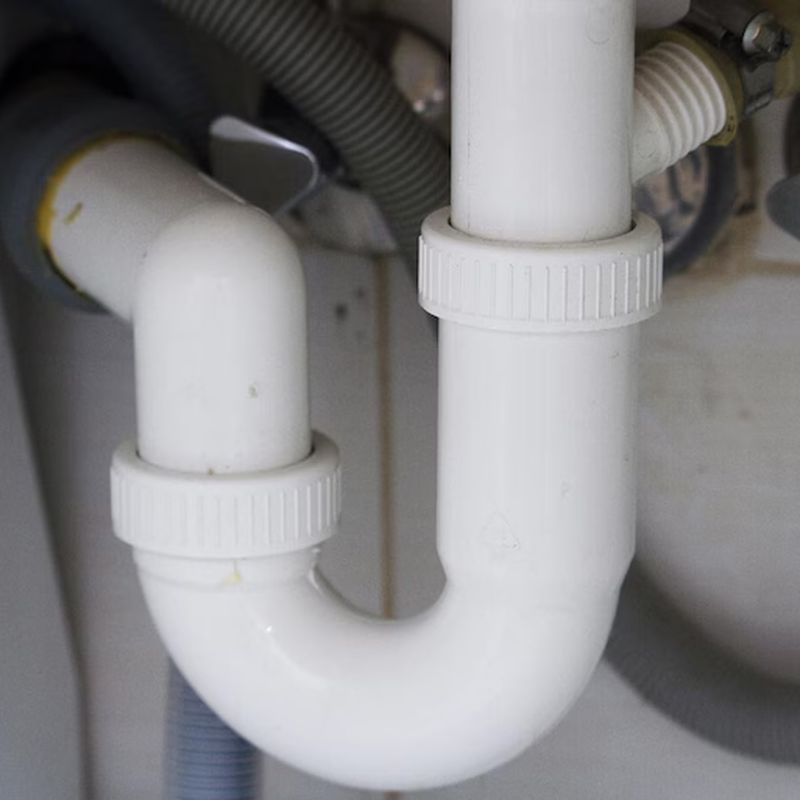 English
English
Jabra Sanitary is a sanitaryware supplier offering toilets, sinks, faucets, bathtubs, etc., at competitive prices. If you're a distributor, wholesaler, or project contractor, get a quote today!
 $23.9 Limited-time Offer
$23.9 Limited-time Offer Consignment Policy
Consignment Policy 20 Years of Experience
20 Years of Experience
It's easy to focus on aesthetics when upgrading your bathroom or installing a new toilet. However, one critical aspect that often goes overlooked during the installation process is the toilet flange height.
While it may not be something you see every day, the toilet flange is essential to ensure your toilet functions correctly and lasts for years without problems. Improper toilet bowl flange height can wreak havoc on your bathroom's plumbing and overall condition.
In this comprehensive guide, we will explain what is a toilet flange height and how to set it accurately. Additionally, we'll offer fixing tips if it is too high, too low, or off-center.
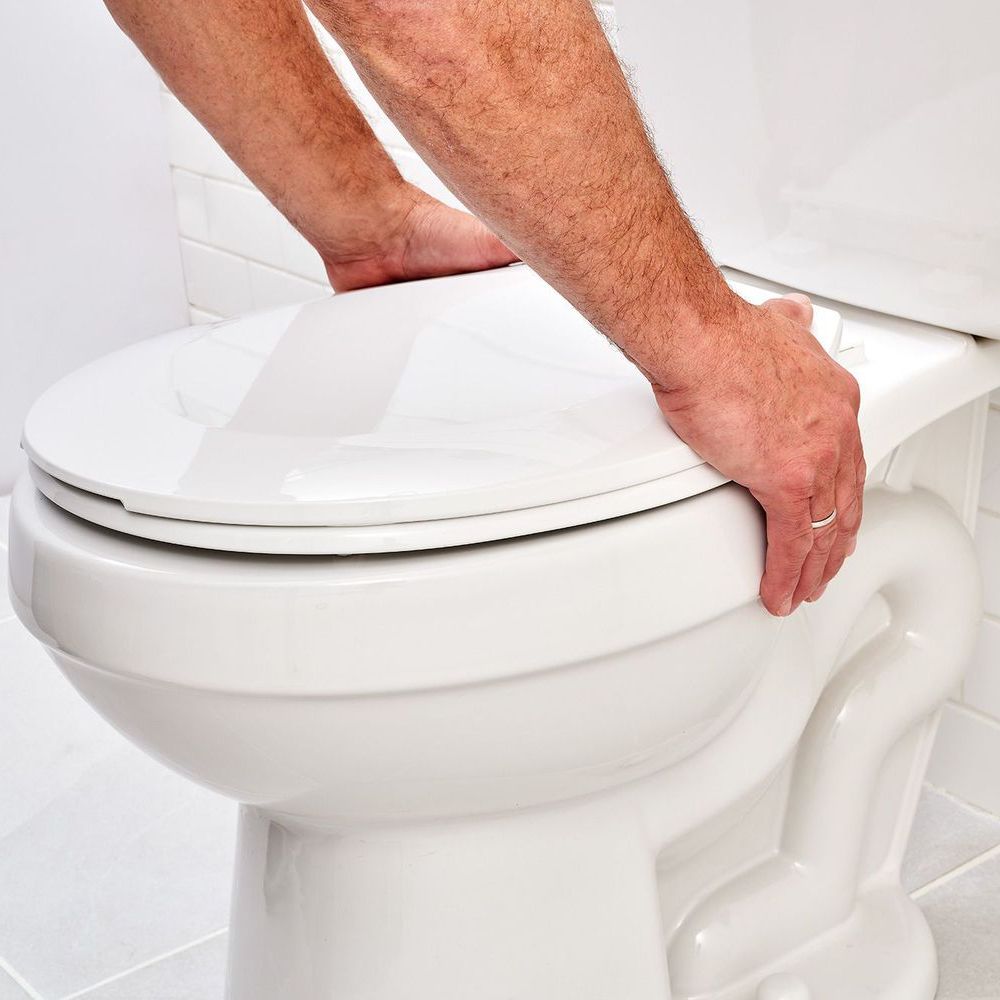
Table of Contents
What is a Toilet Flange?
What is the Standard Height for a Toilet Flange?
How to Set Your Toilet Flange Height
What If the Toilet Flange Is Too Low?
What If Your Toilet Flange Is Too High?
How to Fix a Misaligned Toilet Flange
DIY vs. Hiring a Pro to Fix Toilet Flange Height
FAQs
Conclusion
What is a Toilet Flange?
A toilet flange is a piece of pipe fitting. It connects the bottom of the toilet to the drainpipe. It also secures the toilet firmly on the floor using bolts. <Learn toilet bowl parts>
Toilet flanges are also known as closet flanges. This is because flush toilets were commonly called water closets in the past. Old Toilet flanges are made of cast iron, but modern ones are made of PVC or ABS.
The function of a toilet flange is to secure the toilet on the floor firmly. It has 2 slots which allow toilet mounting blots to be hooked and tightened against it using nuts.
Toilet flanges are secure on the flooring using screws after being slid into the toilet drain line.
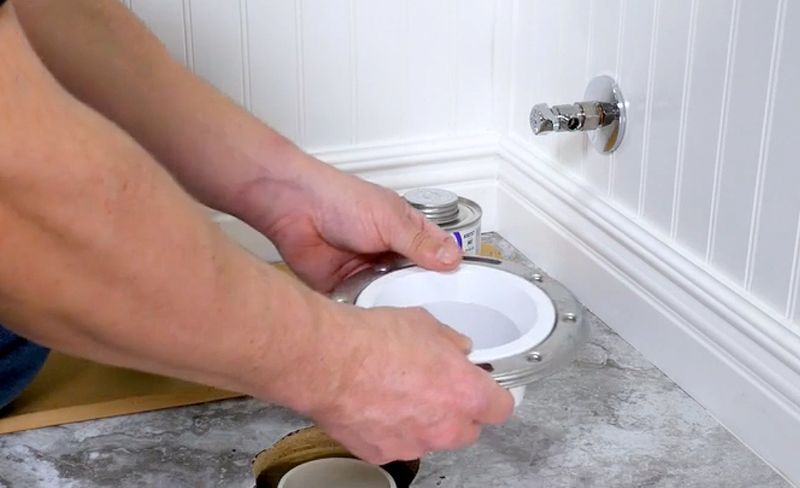
What is the Standard Height for a Toilet Flange?
When it comes to setting the toilet flange height, it's important to follow industry standards to ensure proper functionality.
The standard toilet flange height is typically 1/4 inch above the finished floor level. This height ensures that the flange is aligned properly with the toilet base. This helps create a solid and watertight seal that prevents leaks and toilet instability.
To achieve this standard height, it's crucial to measure the finished floor (the top surface of your flooring material) and ensure that the flange is raised slightly above it.
This small gap allows the toilet to sit flush against the flange. It can also maintain a secure connection with the drainpipe.
How to Set Your Toilet Flange Height
Setting the correct toilet flange height is crucial for ensuring a secure and leak-free installation of your toilet. If the flange is installed at the wrong height, it can cause instability, leaks, and plumbing issues.
Fortunately, with the right tools and materials, you can easily adjust your toilet flange height to ensure a proper fit. Here's a detailed guide on how to do it:
Tools and Materials You Will Need
Before you begin, make sure you have the following tools and materials:
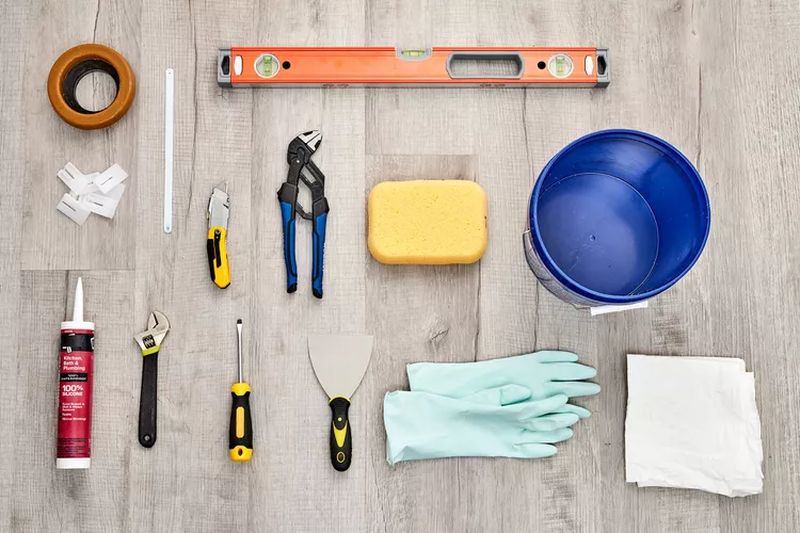
Tape Measure: This is used to measure the height of the flange and the finished floor.
Level: This is used to ensure that your flange is perfectly aligned.
Flange Extender (if needed): If your flange is too low, you may need an extender to raise it to the correct toilet flange height.
Shims: These are useful if your flange is too high or if you need to make slight adjustments.
Screwdriver: This is used to secure the flange to the floor.
Utility Knife: This is used to cut any excess material around the flange if necessary.
Rubber Gasket or Wax Ring: This is used to ensure a proper seal when the toilet is placed on the flange.
A Step-by-Step Guide
Step 1: Measure the Finished Floor Height
The first step in setting your toilet flange height is to measure the finished floor height—the top of the flooring material where the toilet will sit. This will give you a baseline for the proper height for toilet flanges.
Step 2: Check the Existing Flange Height
Next, measure the height of the existing toilet flange from the finished floor. Ideally, the top of the flange should be about 1/4 inch above the floor surface.
Step 3: Adjust the Flange Height (If Necessary)
If your flange is too low, use a flange extender to raise it to the proper height. Extenders come in different thicknesses.
So choose one that will bring the flange exactly 1/4 inch above the finished floor. If the flange is too high, shims can be used to slightly raise the flange to the correct height.
Step 4: Secure the Flange
Once the flange is at the correct height, make sure it is aligned and level. Use a level to check for any tilt.
If necessary, adjust using shims until it's perfectly straight. Then, use screws to secure the flange to the floor. Be sure not to overtighten, as this could crack the flange.
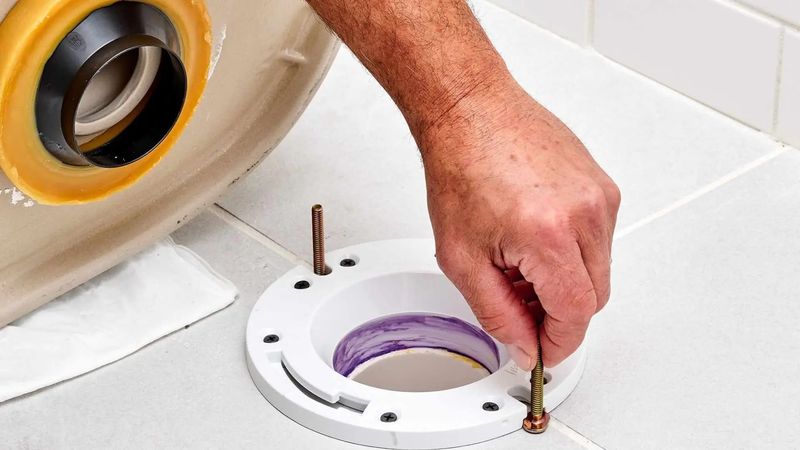
Step 5: Apply the Wax Ring or Gasket
After the flange is set at the proper height, place a wax ring or rubber gasket on the flange. This will form a watertight seal when the toilet is placed on the flange.
Be sure that the ring is centered and properly aligned before proceeding.
Step 6: Install the Toilet
Finally, install your toilet over the flange, ensuring it is aligned with the bolt holes. Press down firmly to create a seal with the wax ring or gasket. Then, secure the toilet with bolts.
By following these steps and using the right tools and materials, you can easily set the correct height for your toilet flange.
This helps ensure a stable and leak-free toilet installation. Keep in mind that attention to detail during this process is key to achieving a long-lasting and reliable toilet setup.
What If the Toilet Flange Is Too Low?
If your toilet flange is set too low, it can lead to several issues. The most common problem is that the toilet will not sit securely, leading to wobbling or shifting over time.
This instability can cause the wax ring or gasket to lose its seal, resulting in leaks, water damage, and unpleasant odors.
Additionally, the flange will fail to create the necessary watertight connection between the toilet and the drain pipe.
To fix a low toilet flange, you can use a flange extender. Here is the detailed steps:
Measure the gap
First, determine how low the flange sits below the finished floor level. This will help you choose the right solution.
- Choose your fix based on the gap size
- For gaps under 1/4 inch
Use an extra thick wax ring
Or stack two regular wax rings (though this isn't ideal long-term)
- For gaps 1/4 inch to 1/2 inch
Install a flange extender ring (plastic or metal)
These bolt directly to the existing flange
- For gaps over 1/2 inch
Use a spacer kit with a metal or PVC flange extender
Add plastic shims under the extender if needed
What If Your Toilet Flange Is Too High?
A flange that sits too high creates a gap between the toilet base and the flange, preventing the wax ring or gasket from forming a secure and watertight seal.
This can cause water to seep out around the base of the toilet, leading to costly repairs and unpleasant odors.
To resolve this issue, first, measure how high the flange sits above the floor level. Here is the detailed solutions to different situations:
If the flange is less than 1/4 inch high
You can often solve this by simply using a standard wax ring
The wax will compress to create a proper seal
If the flange is 1/4 to 1/2 inch high
Cutaway or grind down any excess flooring material around the flange
Consider using a thinner wax ring
Make sure the toilet sits level and doesn't rock
If the flange is more than 1/2 inch high
The best solution is to rebuild the flange connection:
- Remove the flange completely
- Cut the waste pipe below floor level
- Install a new section of pipe at the correct height
- Attach a new flange at floor level
When installing a toilet, it's crucial to never cut or modify the flange, as doing so can compromise its structural integrity.
Be cautious not to overtighten the toilet bolts during reinstallation. This can lead to damage or cracking.
Finally, after the installation is complete, it's essential to check that the toilet is completely stable.
How to Fix a Misaligned Toilet Flange
A misaligned toilet flange can cause leaks, instability, and an improper seal between your toilet and the drainpipe. Fortunately, realigning the flange can restore proper function to your toilet installation. Here is how to do it:
Reinstall the Toilet Flange if It's Off-Center
If your flange is off-center, carefully remove the flange screws and reposition the flange. Doing so, your flange can align perfectly with the drainpipe and the bolt holes of the toilet.
Use a level to ensure the flange sits evenly on the floor. Once aligned, secure the flange back in place with new screws, ensuring a tight fit to prevent future shifting.
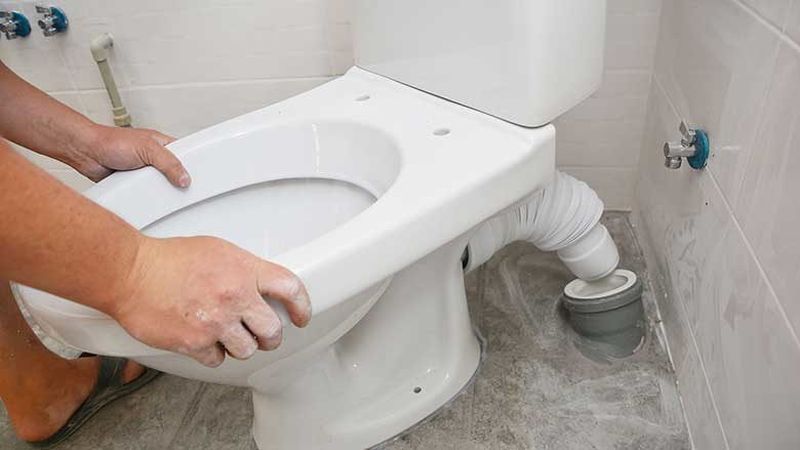
Install a New Flooring Type
If the misalignment is due to the type or thickness of the flooring (a thick tile or vinyl), you may need to adjust the flange height.
In this case, installing a new and thicker flange or using a flange extender will ensure the flange aligns properly with the finished floor.
DIY vs. Hiring a Pro to Fix Toilet Flange Height
When it comes to fixing your toilet flange height, you have two main options: tackling the project yourself (DIY) or hiring a professional plumber.
Both approaches have their pros and cons. The right choice largely depends on your skill level, the complexity of the issue, and your comfort with home improvement projects.
Here is the detailed advice for DIY or hiring a pro:
DIY
If you're a hands-on homeowner with basic plumbing knowledge, adjusting or replacing the toilet flange can be a manageable DIY task. You can save money on labor costs by purchasing the necessary tools and materials.
However, you need to be comfortable with the plumbing system and have a good understanding of the flange's correct placement. Simple flange height adjustments can be done with common tools like a tape measure, level, and flange extender.
Notably, missteps during installation could lead to leaks, water damage, or toilet instability.
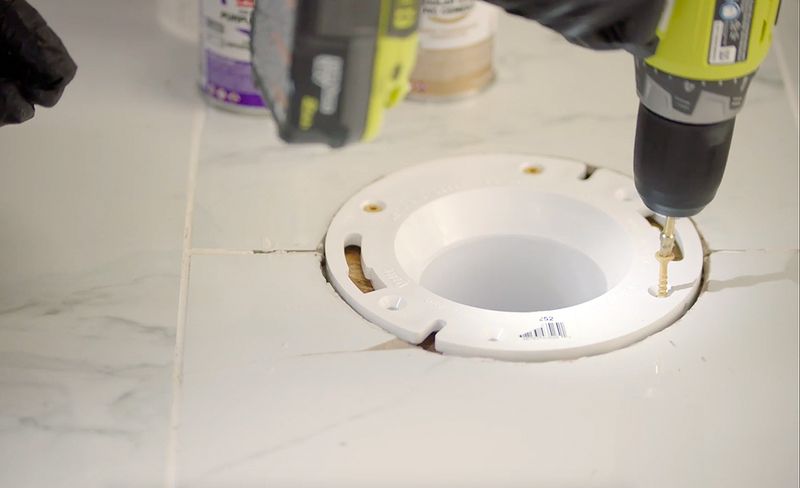
Hiring a Professional
If you're unsure about your ability to handle plumbing tasks or if the problem seems complex (e.g., a misaligned flange or extensive floor damage), hiring a professional plumber may be the best choice.
Pros bring experience, specialized tools, and expertise to ensure the job is done correctly. They also save you time and prevent costly mistakes.
Ultimately, both options can successfully resolve your toilet flange height concerns.
FAQs
Here are some commonly asked questions about toilet flanges:
1) How do I know if my flange is leaking?
Signs of a leaking flange include water pooling around the base of the toilet, foul odors, and the presence of moisture on the floor or surrounding area. If you notice these signs, it could indicate a compromised flange or wax ring seal.
2) Should the toilet flange be screwed to a concrete floor?
Yes, the toilet flange should be securely fastened to a concrete floor to ensure stability and prevent leaks. Use appropriate screws or anchors designed for concrete to attach the flange firmly.
3) How far should a toilet flange be from the wall?
The standard distance between the toilet flange and the finished wall is typically 12 inches. This ensures proper toilet alignment. This also leaves enough space for the toilet to sit comfortably and securely.
4) How to properly extend a toilet flange?
You can use a flange extender, which is available in various thicknesses. Simply place the extender on top of the existing flange and secure it with screws. This method raises the flange to the correct height.
5) Should a toilet flange be flush with the floor?
No, the toilet flange should sit 1/4 inch above the finished floor. This slight elevation ensures a proper seal with the toilet base and helps prevent leaks.
Conclusion
Setting the correct toilet flange height is essential for a stable and leak-free toilet installation. Whether you're adjusting a toilet bowl flange height too high or too low, ensuring proper alignment can prevent costly water damage and maintenance issues.
By following the right steps, using the right tools, and understanding the necessary measurements, you can achieve a secure and long-lasting toilet setup.
If you're unsure, don't hesitate to consult a professional. Jabra Santary is your right choice if you encounter problems with your toilet flange height.










